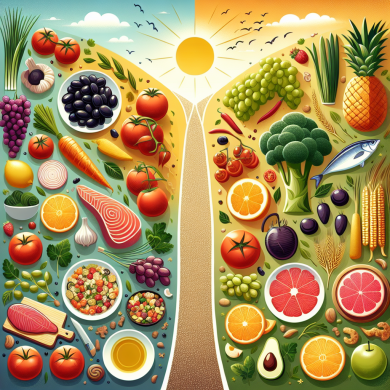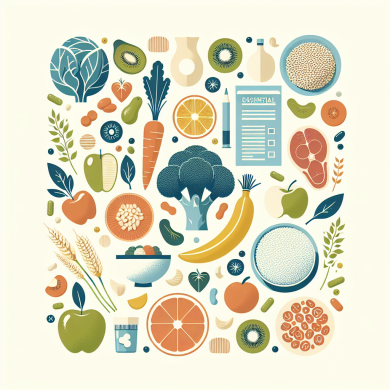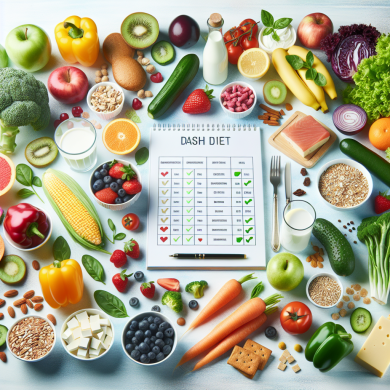Simple Tips to Reduce Sodium Consumption
In today’s fast-paced world, maintaining a healthy diet often takes a backseat as convenience becomes a priority. One of the primary concerns in modern diets is the high sodium content, which can lead to various health issues such as hypertension, heart disease, and stroke. The World Health Organization recommends consuming less than 5 grams (or 2,000 mg) of sodium per day, yet many individuals exceed this amount without realizing it. Fortunately, reducing sodium intake can be simple with a few mindful adjustments to your daily habits. This article explores effective strategies to help you cut down on sodium consumption.
Understanding Sodium and Its Effects
Sodium is an essential mineral that plays a crucial role in maintaining fluid balance, nerve function, and muscle contractions. However, excessive sodium intake can lead to high blood pressure, which is a significant risk factor for cardiovascular diseases. The primary source of sodium in most diets is salt (sodium chloride), but it is also found naturally in various foods and added to processed and restaurant foods in high amounts. Being mindful of sodium intake is vital for overall health and wellbeing.
Read Nutrition Labels
One of the simplest ways to monitor and reduce sodium intake is by reading nutrition labels. Processed and packaged foods are often loaded with sodium, even those that don’t taste salty. Understanding how to read nutrition labels can help you make informed decisions:
- Check the Serving Size: Sodium content is listed per serving, so ensure you understand the portion size to calculate your total intake accurately.
- Look for Low-Sodium Options: Foods labeled as “low sodium” contain 140 mg or less per serving, while “very low sodium” foods contain 35 mg or less. Opt for these whenever possible.
- Identify Hidden Sodium Sources: Ingredients like monosodium glutamate (MSG), baking soda, and sodium nitrite contribute to sodium levels. Be cautious of these ingredients.
Cook at Home More Often
Cooking at home allows you to have complete control over the ingredients you use, making it easier to reduce sodium intake. Here are some tips for preparing low-sodium meals at home:
- Use Fresh Ingredients: Fresh fruits, vegetables, and meats typically contain less sodium than their processed counterparts.
- Experiment with Herbs and Spices: Enhance the flavor of your dishes without salt by using herbs, spices, garlic, lemon juice, and vinegar.
- Reduce Salt Gradually: If you’re accustomed to using salt, reduce the amount gradually to allow your taste buds to adjust.
- Make Your Own Sauces and Dressings: Store-bought versions often contain high levels of sodium. Homemade versions give you better control over sodium content.
Choose Fresh and Whole Foods
Emphasizing fresh and whole foods in your diet can significantly reduce sodium intake. Processed foods often contain high levels of sodium for preservation and flavor enhancement. Consider the following tips:
- Limit Processed Foods: Foods like canned soups, processed meats, and snack foods are notorious for high sodium content. Choose fresh alternatives instead.
- Opt for Fresh or Frozen Vegetables: Canned vegetables often come with added salt. Fresh or frozen options are healthier and just as convenient.
- Buy Fresh Meat: Processed meats, such as deli meats and sausages, are high in sodium. Opt for fresh cuts of meat and poultry.
Be Mindful When Dining Out
Dining out can pose a challenge when trying to reduce sodium intake, but with mindful choices, you can still enjoy meals without consuming excessive sodium:
- Research Menus in Advance: Many restaurants provide nutritional information online. Choose restaurants with healthier, low-sodium options.
- Request Modifications: Ask for sauces and dressings on the side, and request that your food be prepared without added salt.
- Choose Grilled, Baked, or Steamed Options: These cooking methods usually require less salt than fried or sautéed dishes.
- Be Cautious with Condiments: Condiments like soy sauce, ketchup, and salad dressings can add a significant amount of sodium. Use them sparingly.
Rethink Your Snacking Habits
Snacking is an area where sodium intake can quickly add up. Making smarter snack choices can help you stay within recommended sodium limits:
- Choose Unsalted Nuts and Seeds: These are excellent sources of healthy fats and protein without the added sodium.
- Enjoy Fresh Fruits and Vegetables: These snacks are naturally low in sodium and rich in nutrients.
- Opt for Low-Sodium Snacks: Many brands offer low-sodium versions of popular snacks like popcorn and crackers.
Stay Hydrated
Drinking enough water is essential for overall health and can help manage sodium levels in the body. Adequate hydration supports kidney function, allowing excess sodium to be excreted more effectively. Aim to drink at least 8 cups (64 ounces) of water daily, adjusting for activity level and climate.
Educate Yourself and Your Family
Reducing sodium intake is a collective effort, especially if you’re responsible for family meals. Educate yourself and your family members about the importance of a low-sodium diet and involve them in meal planning and preparation. Encourage everyone to read labels and make informed choices about the foods they consume.
Track Your Progress
Keeping track of your sodium intake can help you stay accountable and motivated. Use a food diary or a mobile app to log your daily sodium consumption. This practice can help you identify patterns and areas for improvement, making it easier to meet your sodium reduction goals.
Conclusion
Reducing sodium consumption is a vital step toward maintaining a healthy lifestyle and preventing chronic health issues. By understanding the sources of sodium in your diet and making mindful choices, you can significantly decrease your intake. Whether it’s reading nutrition labels, cooking at home, or making smarter choices when dining out, small changes can make a big difference. By prioritizing fresh, whole foods and being conscious of your sodium consumption, you can enjoy flavorful meals while safeguarding your health.















Add comment